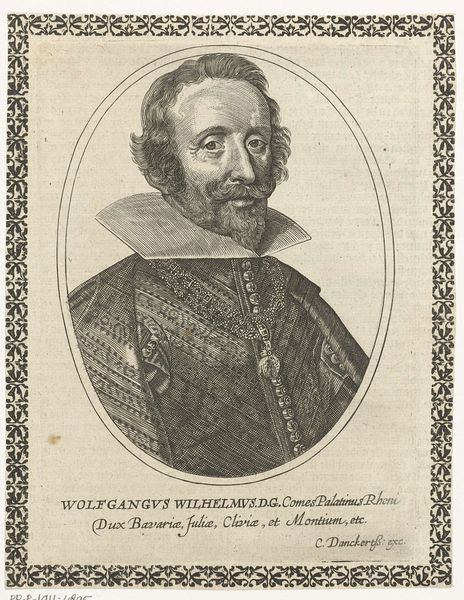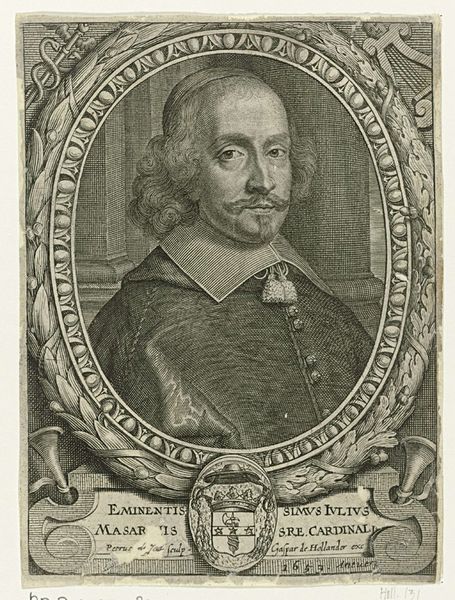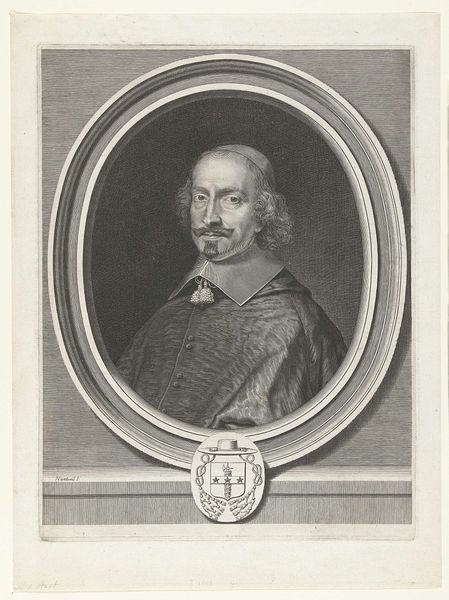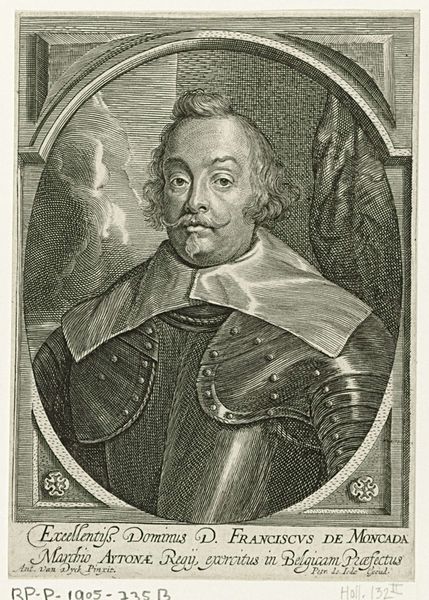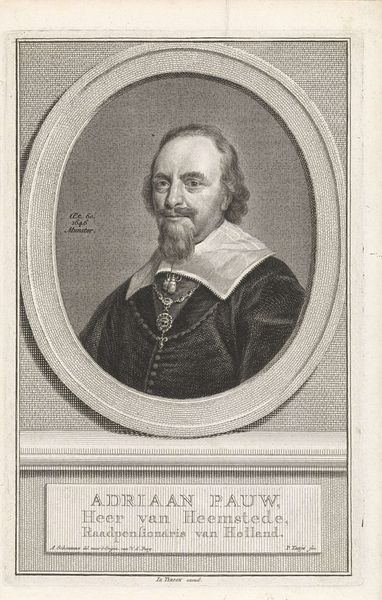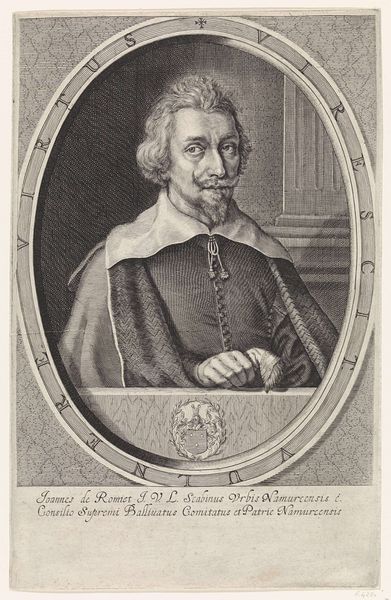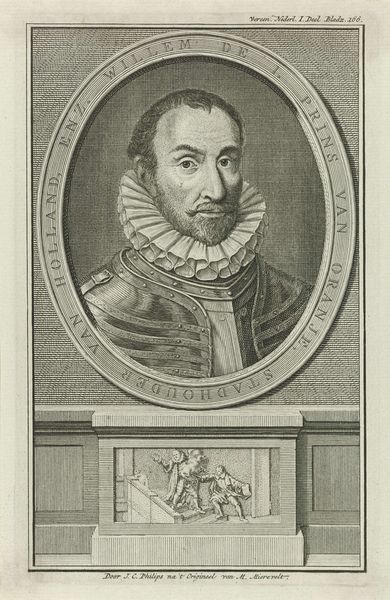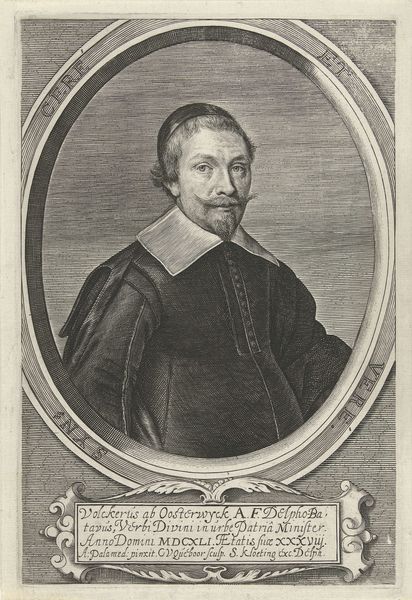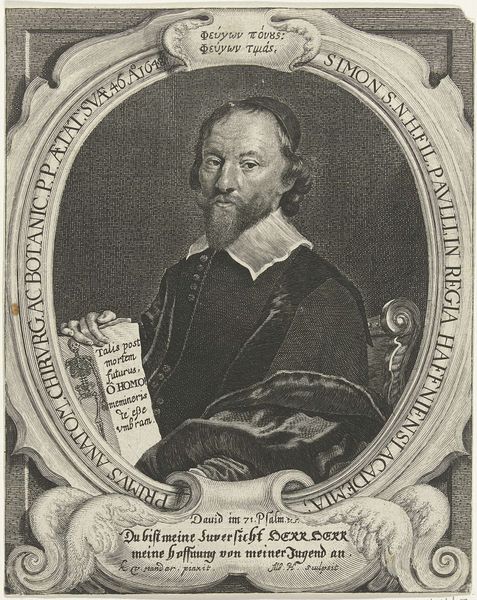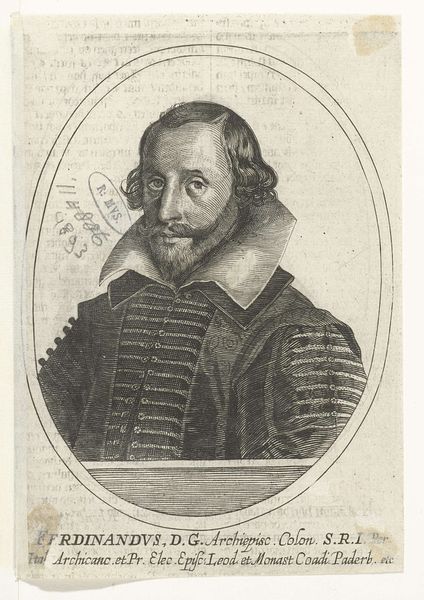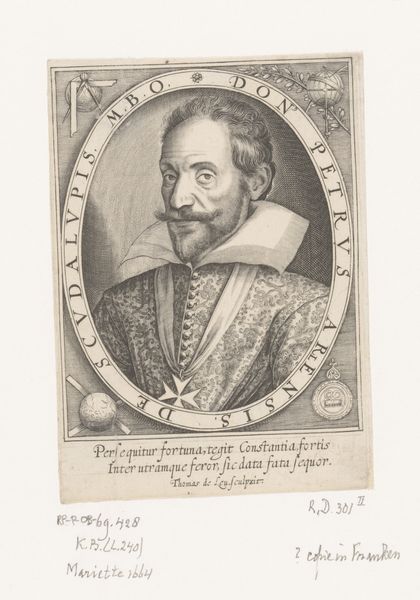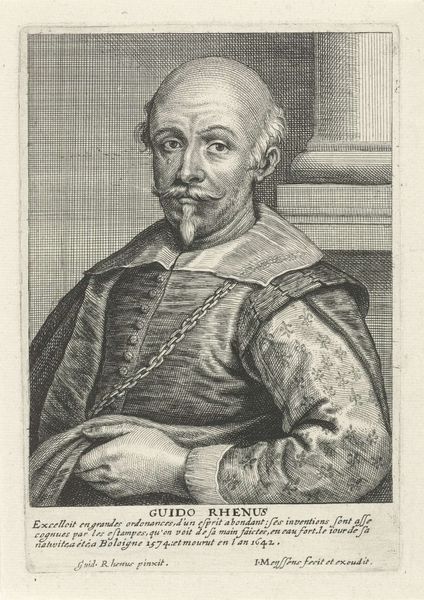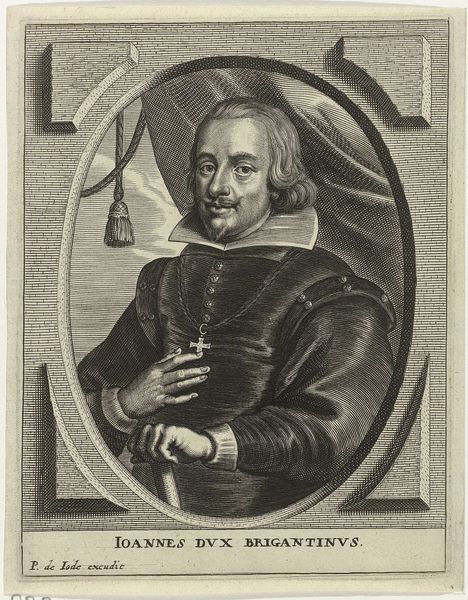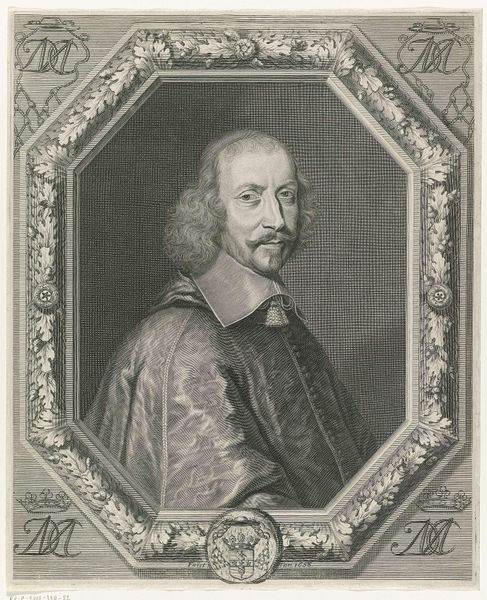
print, metal, engraving
#
portrait
#
baroque
# print
#
metal
#
history-painting
#
engraving
Dimensions: height 140 mm, width 100 mm
Copyright: Rijks Museum: Open Domain
Curator: This is a portrait of Wolfgang Wilhelm van de Palts, created between 1628 and 1670. The artist is Pieter de Jode the Younger. It's currently housed here at the Rijksmuseum. Editor: The stark contrast gives him a very formidable air, wouldn’t you agree? There is an emotional distance and it is cold despite the warmth in the wavy rendering of hair and beard. I'm also struck by the level of detail rendered in the subject’s clothing and jewellery given that this work is an engraving. You can practically feel the weight of that chain! Curator: The weight of those chains undoubtedly represents power. Baroque portraiture often employed such symbols to convey status. But it’s not simply about wealth; notice the city or landscape visible through the window above his shoulder. This refers back to the Duke’s lineage and connection to the land. It evokes a sense of belonging, of divine right and historical weight, carefully constructed through these combined visual elements. Editor: Interesting point! To your suggestion regarding visual lineage, it’s fascinating how an engraver like De Jode transformed metal into something so apparently soft, so representational of flesh. The control over the tools, the mastery over materials, reflects the social and material values of the age as much as it serves Wolfgang's self-fashioning. How labor transformed Wolfgang from being just anyone to an idol through this circulated artwork. Curator: Indeed, the engraver acted almost as a vessel. By manipulating metal to capture human likeness, we understand that material objects possess power. The engraver channels and refracts this power through learned skill, capturing both image and social significance. Consider how the sharp, clean lines evoke notions of precision and control. It amplifies the sense of the sitter's command. The lines of engraving represent and replicate the power of Duke Wolfgang and of the engraving tools simultaneously. Editor: Very insightful! It enriches the visual impact, doesn’t it? Highlighting labor and visual messaging gives the portrait more symbolic depth and materiality, beyond just surface appearance. Curator: Absolutely. By unpacking these intricate layers of meaning and manufacture, we gain a fuller appreciation for the power of representation and image creation during this period. The symbols continue to resonate in our collective memory, even centuries later.
Comments
No comments
Be the first to comment and join the conversation on the ultimate creative platform.
